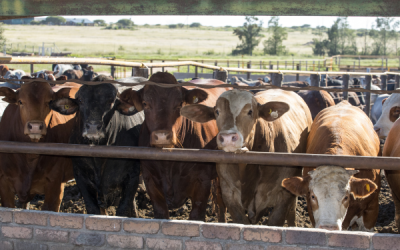Screwworms are screwing up beef imports from Mexico, and it will likely impact feeder cattle prices.
After the discovery of a screwworm in Mexico on Friday, the USDA’s Animal and Plant Health Inspection Service (APHIS) announced it would pause animal imports from Mexico.
Soundbite: “Even if the border opens soon the measures will be costly and it will impact cattle operations in the U.S. and Mexico for some time to come.” — Daniel Manzanares, director of the Santa Teresa International Export/Import Livestock Crossing in New Mexico
While only 5% of the U.S. feeder cattle supply comes from Mexico, Santa Teresa pens are already empty. On a typical day, they’d be filled with thousands of Mexican cattle before heading north.
Fun fact: Almost 500K feeder steers and heifers cross the border through Santa Teresa annually, making it the largest livestock entry point in the U.S.
Worming their way in: The New World screwworm, a flesh-eating fly larva that attacks live tissue in cattle, hadn’t been seen in Mexico in 30 years. Earlier in November, Mexican officials detected a screwworm in a cow at Mexico’s border with Guatemala. The animal did not originate in Mexico.
No “fly” zone: APHIS doubled down on its efforts to control screwworms in 2006 and worked with Panama on a barrier zone. Central American countries have struggled with screwworms for a while, and the zone helped—until recently. Detections in Panama went from 25 cases per year to more than 6,500 cases in 2023.
APHIS spends $110M to keep screwworms out of North America.
Candidates’ Big Talk, Ag’s Trade War Worries
Ahead of the presidential election, economists and lawmakers are hoping their crystal...
Farmer Blues Show in Economic Gauge
Feeling blue about the ag economy? You’re not alone. Reaping frustration: Farmer sentiment is in...
Industrial Agricultural Conversion Act and What it Means
New bill on the hill: A bill was introduced in the House and Senate on September 25 that would use...




